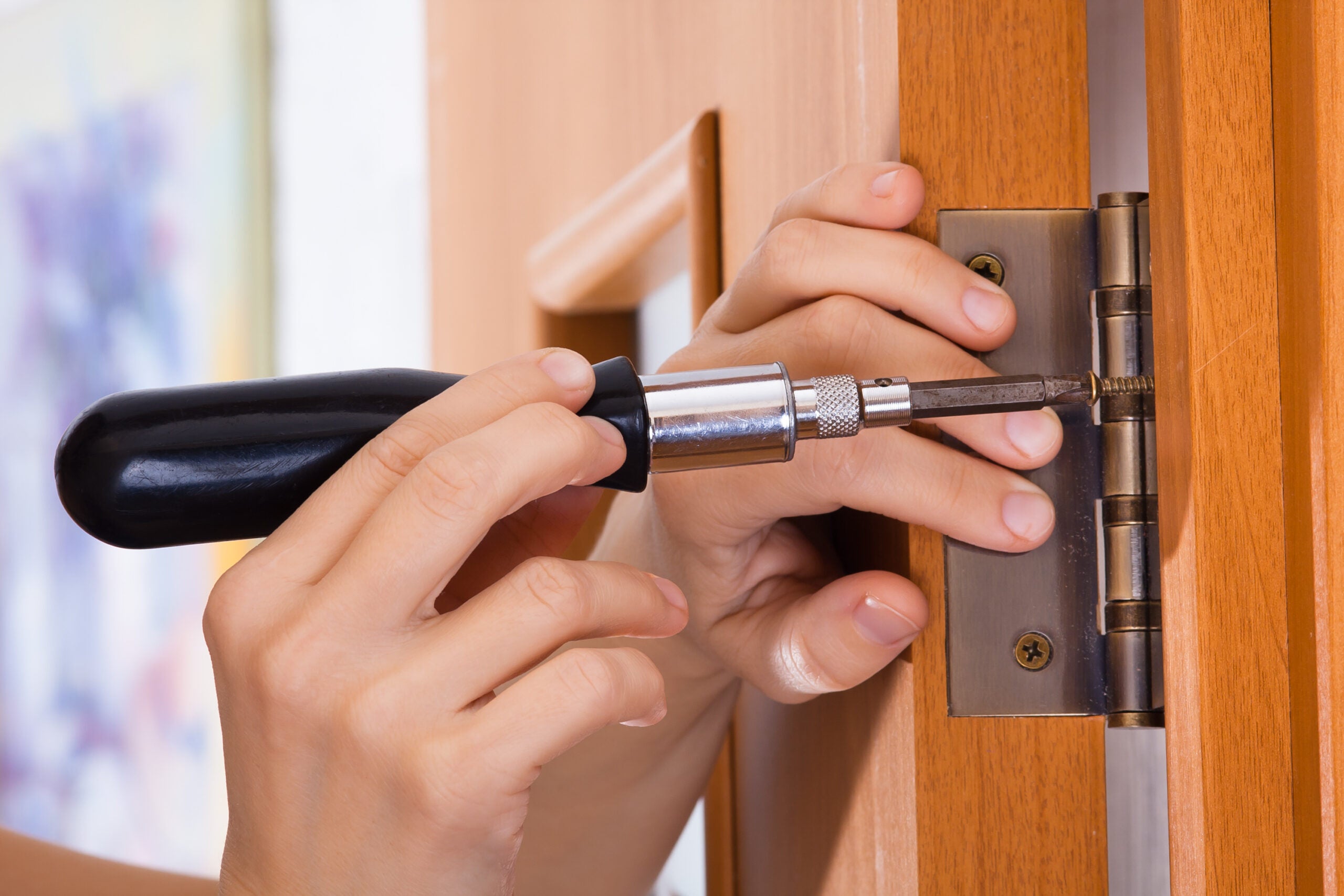Common Causes for Cabinet Doors Not Closing Properly

It’s super frustrating when your cabinet doors are acting up, right? Like, you’re trying to grab a snack or put away some dishes, and bam! The door won’t close properly. It’s like the cabinet is trying to tell you something, but it’s speaking in broken English. Don’t worry, though! We’re gonna figure out what’s going on and fix it.
Doors Sticking
This is like when your best friend is trying to squeeze into a tight space – it’s just not happening. There are a few reasons why your cabinet doors might be sticking:
- Warped Doors: Imagine a door that’s like a banana – it’s got a curve in it. This can happen due to changes in humidity or temperature, especially if the wood is not properly sealed. It can cause the door to rub against the frame. You might notice the door sticking at the top or bottom, or even along the sides.
- Misaligned Hinges: Think of the hinges as the door’s best friend, holding it up. If the hinges are out of whack, the door won’t be able to close properly. This can happen if the screws holding the hinges are loose or if the hinges themselves are damaged. You might notice the door hanging at an angle or not closing all the way.
- Obstructed Tracks: Like a train track, the door needs a smooth path to slide. If something’s blocking the track, the door won’t be able to close. This could be a build-up of dust, grime, or even a small object like a crumb. You might notice the door catching or making a scraping sound as it closes.
Troubleshooting and Repair Techniques

Now that we’ve identified the common culprits behind those stubborn cabinet doors, it’s time to roll up our sleeves and get to work! This section will guide you through the most effective techniques for fixing those pesky door problems.
Tools and Materials
Having the right tools on hand will make your cabinet door repair a breeze. Here’s a list of essential items:
- Screwdriver set: A good set with both Phillips and flathead screwdrivers in various sizes will cover most scenarios.
- Level: Ensures your doors hang straight and even.
- Tape measure: Helps you take precise measurements for adjustments.
- Pencil: For marking adjustments and noting measurements.
- Hinge adjustment tool: Specifically designed for adjusting hinge screws, making the process easier.
- Wood glue: For securing loose screws or fixing minor wood damage.
- Wood filler: For filling in any gaps or holes created during repairs.
- Sandpaper: For smoothing out any rough edges after repairs.
- Paint or stain: To match the existing cabinet finish, if needed.
Adjusting Hinges
Hinges are the heart of your cabinet doors, so ensuring they’re properly adjusted is crucial.
- Identifying the problem: If your door is sagging, it’s likely the hinge screws are loose or the hinges themselves need adjusting. If the door is misaligned, you’ll need to adjust the hinge screws to correct the position.
- Tightening screws: Start by tightening the screws that hold the hinge to the cabinet frame. Use a screwdriver to firmly tighten them. If the screws are stripped or too loose, you might need to replace them with new ones.
- Adjusting the hinge: Most hinges have adjustment screws that allow you to fine-tune the door’s position. Use a hinge adjustment tool or a small screwdriver to turn the screws. Turning the screw on the top of the hinge will move the door up or down. Turning the screw on the side of the hinge will move the door in or out. Experiment with small adjustments until the door hangs straight and closes properly.
Tightening Screws
Loose screws are a common culprit for cabinet doors that won’t close properly.
- Inspecting the screws: Carefully inspect all the screws that hold the door to the cabinet frame. Look for any that are loose or stripped.
- Tightening the screws: Use a screwdriver to tighten any loose screws. If the screws are stripped, you may need to replace them with new ones. Be careful not to overtighten the screws, as this can damage the wood.
- Filling holes: If the screws are stripped or the holes are enlarged, you can fill them with wood filler. Allow the filler to dry completely before sanding it smooth and repainting or staining the area to match the existing finish.
Repairing Damaged Wood
Sometimes, the cabinet door itself might be damaged, preventing it from closing properly.
- Assessing the damage: Inspect the door for any cracks, splits, or warping. Minor damage can often be repaired, while more severe damage might require replacing the door.
- Repairing minor damage: For small cracks or splits, use wood glue to bond the pieces together. Clamp the pieces in place until the glue dries completely. For larger cracks, you may need to use wood filler to fill the gap. Allow the filler to dry completely before sanding it smooth and repainting or staining the area to match the existing finish.
- Replacing the door: If the damage is too severe to repair, you may need to replace the door. Measure the existing door and purchase a new one that is the same size. You can then install the new door using the existing hinges.
Other Common Fixes
- Adjusting the door stop: The door stop is a small piece of metal that prevents the door from swinging too far open. If the door stop is misaligned, it can prevent the door from closing properly. Use a screwdriver to adjust the door stop until the door closes flush with the cabinet frame.
- Removing obstructions: Sometimes, objects can get stuck in the cabinet door, preventing it from closing. Check for anything that might be blocking the door, such as a piece of food, a toy, or a piece of paper. Remove any obstructions and try closing the door again.
- Replacing the cabinet door handle: If the cabinet door handle is loose or broken, it can prevent the door from closing properly. Replace the handle with a new one. Make sure the new handle is the correct size and type for your cabinet.
Preventing Future Cabinet Door Issues: Why Wont My Cabinet Doors Close

You’ve fixed your cabinet doors, but you want to make sure they stay that way, right? Preventing future issues is all about being proactive and taking care of your cabinets and their hardware. Here’s how you can keep your cabinet doors happy and closing smoothly for years to come.
Cabinet Maintenance, Why wont my cabinet doors close
Regular maintenance is key to preventing problems. Here’s a simple checklist:
- Clean Regularly: Dust and grime can build up and cause hinges to stick or become stiff. Wipe down your cabinet doors and hinges with a damp cloth regularly.
- Check for Loose Screws: Over time, screws can loosen, leading to doors that sag or don’t close properly. Tighten any loose screws with a screwdriver.
- Lubricate Hinges: Hinges can benefit from a little lubrication. Use a light oil or spray lubricant to keep them moving smoothly.
- Inspect for Damage: Check your cabinet doors and hinges for any signs of damage, such as cracks, chips, or bent metal. Address these issues promptly to prevent further problems.
Types of Hinges
Choosing the right hinges can make a big difference in the longevity and performance of your cabinet doors. Here’s a quick rundown of common hinge types:
- Butt Hinges: The most basic type, butt hinges are simple and affordable. They’re good for standard cabinet doors but may not be as durable as other options.
- European Hinges: These are often used in modern cabinets and offer a more concealed look. They’re also known for their durability and smooth operation.
- Full Overlay Hinges: These hinges allow the cabinet door to completely cover the cabinet frame, creating a sleek and modern look.
- Half Overlay Hinges: These hinges are similar to full overlay but allow a portion of the cabinet frame to show when the door is closed.
Proper Installation and Adjustments
Proper installation is crucial for preventing future problems.
- Follow Manufacturer Instructions: Always follow the manufacturer’s instructions for installing hinges and adjusting doors.
- Use the Right Tools: Use the right tools for the job to ensure a secure and accurate installation.
- Adjust Doors Carefully: Make sure your doors are properly aligned and adjusted. You can use a level to ensure they’re plumb and a tape measure to check for even gaps.
Why wont my cabinet doors close – The persistent creak of your cabinet doors, refusing to close properly, might seem like a minor annoyance. But perhaps it’s a subtle nudge from your inner self, yearning for a refresh. Imagine a sanctuary where sleek black accents meet vibrant green hues, creating a space that’s both sophisticated and energizing.
Black and green bedroom decor can transform your space into a haven of calm and style, leaving you with a renewed sense of peace. And as you finally fix those cabinet doors, you’ll find that even the smallest changes can bring a sense of order and tranquility to your surroundings.
The frustration of cabinet doors that refuse to close can be a real test of patience. Perhaps the hinges are worn, or maybe the cabinet itself has shifted over time. If you’re looking for a refresh that goes beyond just fixing the problem, consider the elegance of pre painted cabinet doors.
These doors offer a clean, modern look that can instantly elevate your kitchen. And with a fresh set of doors, you can finally enjoy the satisfying click of a properly closing cabinet, a small victory that can make a big difference in your daily life.
